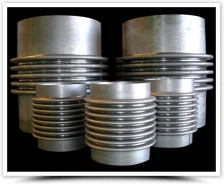A  paper published in september 2016 on www.civil.northwestern.edu .
paper published in september 2016 on www.civil.northwestern.edu .
Abstract : The previously formulated model of the gravity-driven collapse of the twin towers of the World Trade Center on 9/11/2001 was shown to match all the existing observations, including the video record of the crush-down motion of the top part of tower during the first few seconds, the seismically recorded duration of collapse, the size distribution of particles caused by impact comminution of concrete floor slabs, the loud booms due to near-sonic lateral ejection velocity of air and dust, and precedence of the crush-down collapse mode before the crush-up. Nevertheless, di↵erent degrees of ductility, fracturing and end support flexibility of WTC columns could lead to an equally good match of these observations and remained uncertain, due to lack of test data. Recently, Korol and Sivakumaran reported valuable experiments that allow clarifying this uncertainty. They reveal that, under the assumptions of rigid end supports and unlimited ductility (or no fracturing), the energy dissipation in the WTC columns would have been at maximum 3.5-times as large as that calculated by the plastic hinge mechanism normally considered for small deflection buckling. This increase would still allow close match of all the aforementioned observations except for the first two seconds of the video. The proper conclusion from Korol and Sivakumaran’s tests, based on close matching of the video record, is that the fracturing of columns and the flexibility of end restraints must have significantly reduced the energy dissipation in columns calculated under the assumptions of no fracture and no end restraint flexibility.
Read more
WordPress:
J'aime chargement…
 A paper published in the « Indian Journal of Science and Technology« , august 2016.
A paper published in the « Indian Journal of Science and Technology« , august 2016.
